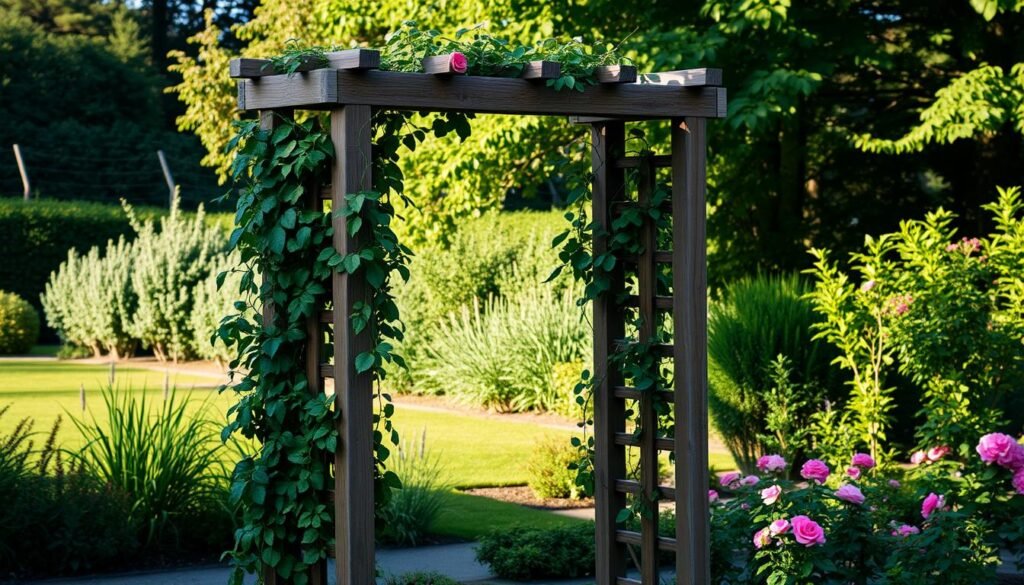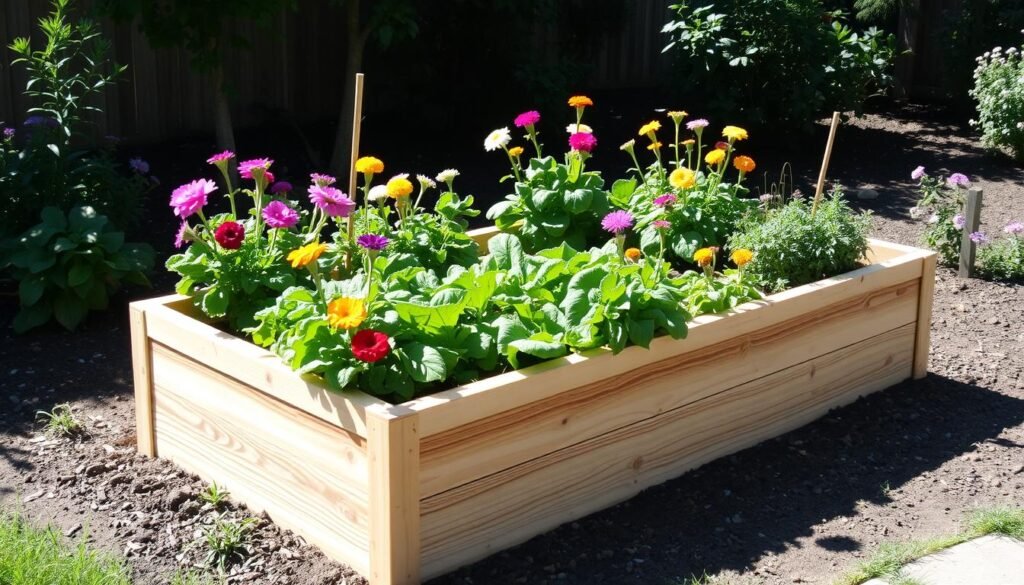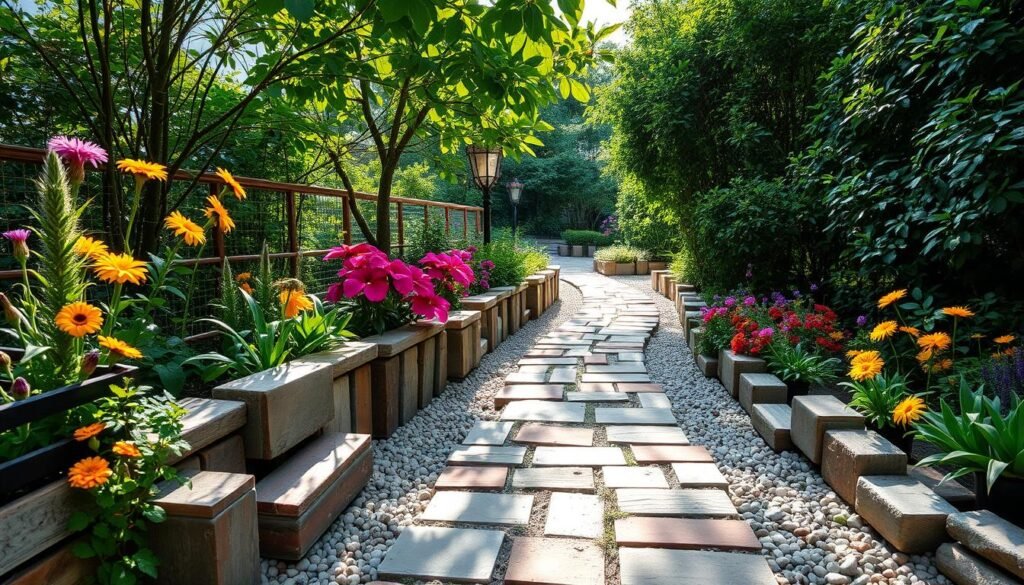Ever dreamed of turning your garden into a lush oasis with cascading vines? The secret to achieving this lies in crafting a personalized garden trellis. But how do you start? Dive into the world of DIY trellis-making and learn how to support your climbing plants with flair.
Imagine creating a custom trellis that supports your plants and enhances your outdoor space. This guide will teach you how to do just that. Get ready to unleash your creativity and turn your garden into a breathtaking, personalized retreat.
Unleash Your Creativity: DIY Garden Trellises for Climbing Plants
Creating your own garden trellis for climbing plants is a rewarding project. It allows you to tailor a structure that fits your outdoor space and the climbing plants you have. Whether you aim for simplicity or ornateness, the choice of materials and style is crucial. It should enhance both your garden and the plants it supports.
Materials Needed for Your Personalized Trellis
To build a DIY garden trellis, you’ll need basic materials. These include:
- Wooden posts or bars (e.g., cedar, redwood, or pressure-treated pine) for the frame
- Nails, screws, or other fasteners to secure the structure
- Optional decorative elements like lattices, twigs, or wire for a more ornamental design
The size and shape of your trellis will depend on several factors. These include the space available, the growth habits of your plants, and your personal taste.
Design Inspiration: Exploring Trellis Styles
DIY garden trellis designs offer endless possibilities. Here are some popular styles:
- Geometric Shapes: Simple, clean-lined trellises with patterns like squares, rectangles, or triangles can create a modern, minimalist look.
- Arched or Curved Structures: These elegant, romantic designs can add a touch of whimsy to your garden and provide ample vertical space for climbing vines.
- Lattice or Trellis Panels: Interwoven wooden or wire grids offer a classic, rustic charm and a sturdy framework for your climbing plants.
- Obelisk or Pyramid Shapes: Tall, tapered trellises can make a striking vertical statement and work well for vines with limited horizontal growth.
When choosing a trellis style, consider your plants’ needs, your garden’s aesthetic, and your DIY skills. With creativity, you can create a trellis that beautifully showcases your climbing vines.
Step-by-Step Guide to Building Your Trellis
Building a DIY garden trellis is a fulfilling project that can change your outdoor area and support climbing plants. We’ll walk through a step-by-step guide to making a simple yet elegant trellis. This will enhance your garden’s beauty.
- Measure and Cut the Wood: First, decide on your trellis’s size. Then, cut the wooden posts and crossbeams to the right lengths. Make sure your measurements are exact for a strong and balanced structure.
- Assemble the Frame: Place the wooden posts in your chosen design, whether it’s a classic A-frame or something more complex. Attach the crossbeams to the posts using screws or nails for a solid bond.
- Add Decorative Elements (Optional): To add a personal touch, consider adding decorations like lattice, trellises, or even recycled materials like wood or metal.
- Finish and Secure the Trellis: After building the frame, apply a weatherproof finish like stain or paint to protect the wood. Finally, secure the trellis to the ground or attach it to a wall or fence for stability.
By following these simple steps, you can create a stunning and practical DIY garden trellis. It will support your climbing plants and improve your outdoor space’s look. The secret to a great trellis is in the details and creativity to make it uniquely yours.

A tutorial on building simple and stylish trellises to support climbing plants
Incorporating climbing plants into your garden can significantly enhance its beauty. These plants need sturdy support to thrive. A trellis serves as both a practical and decorative solution.
Customizing Your Trellis for Aesthetic Appeal
While functionality is key, you can also make your trellis a reflection of your personal style. Adding decorative elements like carved designs or contrasting wood tones can give it a unique flair. Exploring different shapes and patterns can also enhance its visual appeal.
For a modern look, choose clean lines and sleek designs. If you prefer a rustic or vintage vibe, consider natural wood textures, intricate lattice patterns, or repurposed materials like old barn wood or copper pipes.
| Trellis Style | Design Elements | Complementary Climbing Plants |
|---|---|---|
| Arched Trellis | Curved, graceful lines | Climbing roses, wisteria, clematis |
| Lattice Trellis | Intersecting wood or metal slats | Ivy, morning glories, climbing hydrangeas |
| Vertical Trellis | Tall, narrow design | Pole beans, peas, sweet peas |
Customizing your trellis can transform it into a striking focal point in your garden. It not only supports your climbing plants but also elevates the beauty of your outdoor spaces.

Choosing the Perfect Climbing Plants
Choosing the right climbing plants is essential when adding support structures to your garden. The right vines can turn a simple trellis into a lush, verdant display. Consider growth habits, sun exposure, and aesthetic appeal when selecting the perfect plants for your DIY trellis.
Growing Tips for Healthy Climbing Vines
Keeping your climbing plants healthy is crucial for their long-term success on your trellis. Here are some tips to help your vines thrive:
- Provide the right support structures: Trellises, cages, or vertical posts are vital for guiding vine growth and preventing tangles.
- Employ proper training techniques: Regular pruning, tying, and guiding vines will encourage them to grow along the desired path, creating a stunning display.
- Ensure adequate sunlight and water: Most climbing plants need at least 6 hours of direct sunlight daily and consistent moisture to thrive.
- Monitor for pests and diseases: Regularly check your vines for signs of insect infestations or fungal infections, and address them promptly to maintain health.
By following these tips and choosing the right plants, you can enjoy a lush, thriving display. This will add beauty and charm to your garden for years to come.

Integrating Trellises into Your Garden Design
Incorporating your DIY garden trellis into your outdoor space opens up a world of possibilities. By carefully placing your trellis and matching it with garden decor ideas, you can achieve a unified and harmonious outdoor living spaces. Whether you prefer a traditional, rustic look or something contemporary, the goal is to make your trellis blend seamlessly with the backyard landscaping.
Think about where to place your trellis, like against a wall, fence, or as a centerpiece in a flower bed. Strategically placing your trellis can improve the flow and balance of your gardening projects. Adding elements like potted plants, garden sculptures, or decorative planters can enhance the overall look, creating a cohesive display.
Surrounding your trellis with matching climbing plants can elevate the beauty of your outdoor area. Choose vibrant flowering vines or lush, cascading foliage to turn your trellis into a stunning focal point. This adds depth, texture, and visual appeal to your garden decor ideas. By integrating your trellis thoughtfully, you can craft an inviting and captivating outdoor living spaces that showcases your personal style and gardening passion.
FAQ
What are the essential materials needed to build a DIY garden trellis?
To create a DIY garden trellis, you’ll need wood like cedar, pine, or pressure-treated lumber. Fasteners such as screws, nails, or brackets are also crucial. You can add optional decorative elements like lattice, vines, or unique hardware to enhance the look.
What are some popular trellis design styles to consider?
There’s a wide range of trellis designs available. You can opt for simple shapes like A-frames or arches. Or, choose more complex lattice or lattice-inspired designs. You can even create a custom shape that matches your garden’s layout and personal style.
Can I customize my trellis for aesthetic appeal?
Yes, you can definitely make your trellis unique. Add decorative touches like carved designs, contrasting wood tones, or unique shapes. This will help your trellis stand out and complement your garden’s style.
How do I properly train and maintain my climbing plants on the trellis?
Training your climbing vines is key to their health. Gently guide the stems and tendrils along the trellis. Regular pruning, watering, and pest monitoring are also essential. This will keep your plants thriving and looking great.
Where is the best place to position my garden trellis?
When choosing a spot for your trellis, consider sun exposure, space, and garden design. A well-placed trellis can become a beautiful focal point. It can also improve the overall look of your outdoor space.

